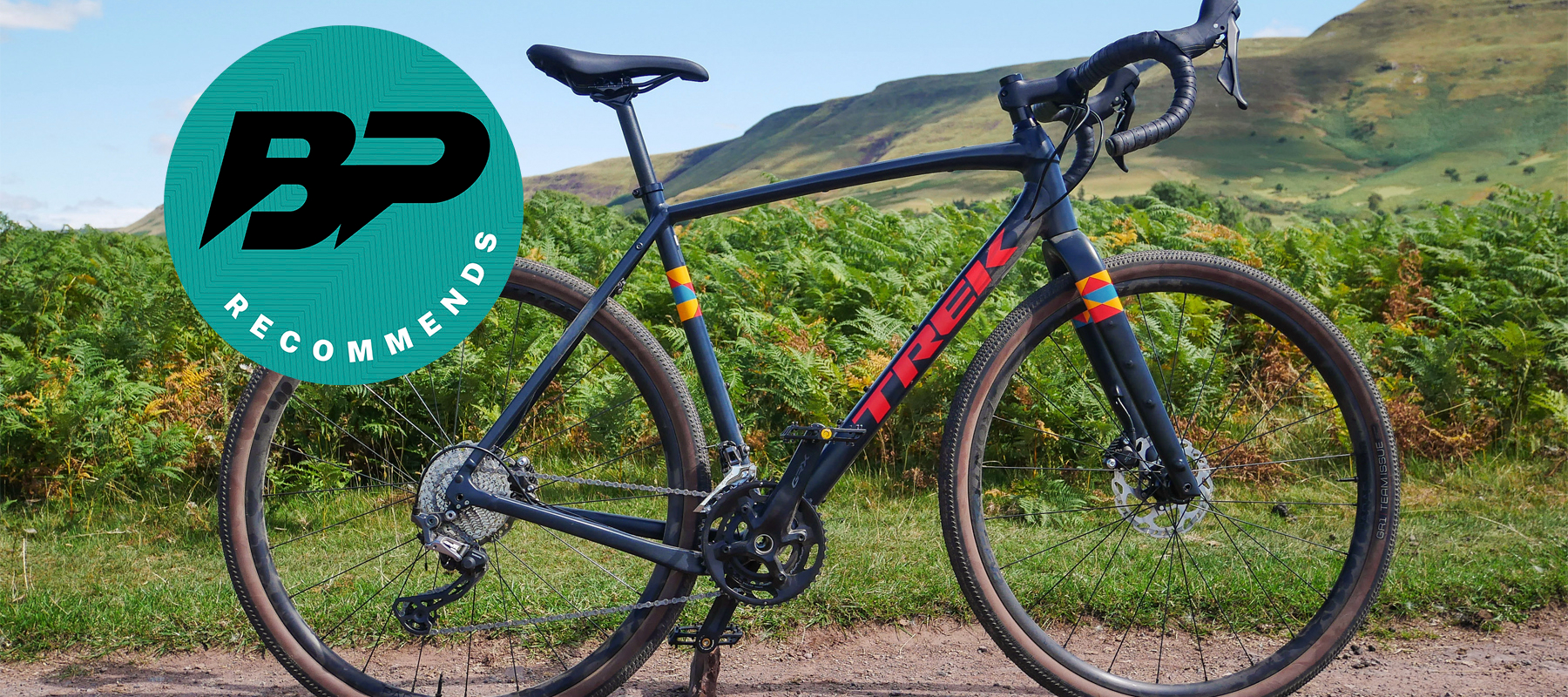Bike Perfect Verdict
The reshaped Checkpoint frame neatly combines confidence-inspiring stability with a fun, engaging feel which goes well at all speeds on all sorts of surfaces. This might not be the lightest or fanciest build, but the key bits are great and the rest just quietly works.
Pros
- +
Stable and predictable
- +
Comfortable
- +
Great shifting and brakes
Cons
- -
Gearing a bit tall for the weight
- -
Could use a dropper post
Why trust BikePerfect
The aluminium-framed ALR models sit at the bottom of Trek's Checkpoint range, with the lighter carbon SL and race-focused SLR bikes above, but in truth that's not a bad place to be. The ALR 5 gets a full set of excellent Shimano GRX components for the drivetrain and brakes, decent tires on tubeless-ready rims and lots of rack and fender mounts.
The result is a surefooted, confident bike that's ready for exactly what Trek says it's for – gravel riding for fun, commuting or just general adventures. Which is pretty much what most people are after when looking for the best gravel bikes or best cheap gravel bikes.
Design and geometry
For 2023, the Checkpoint frame has seen some changes – basically it's got longer both in the front centre and the chainstays, and the stem is shorter to compensate. I tested a 58cm, and compared to the 2021 model it has 10mm longer chainstays, 20mm more reach and is 26mm longer overall. The 90mm stem and 60.9cm/41.1cm stack and reach figures keep the overall riding position fairly relaxed, with a usefully tall front end and slightly head-down, but certainly not front heavy, bias.
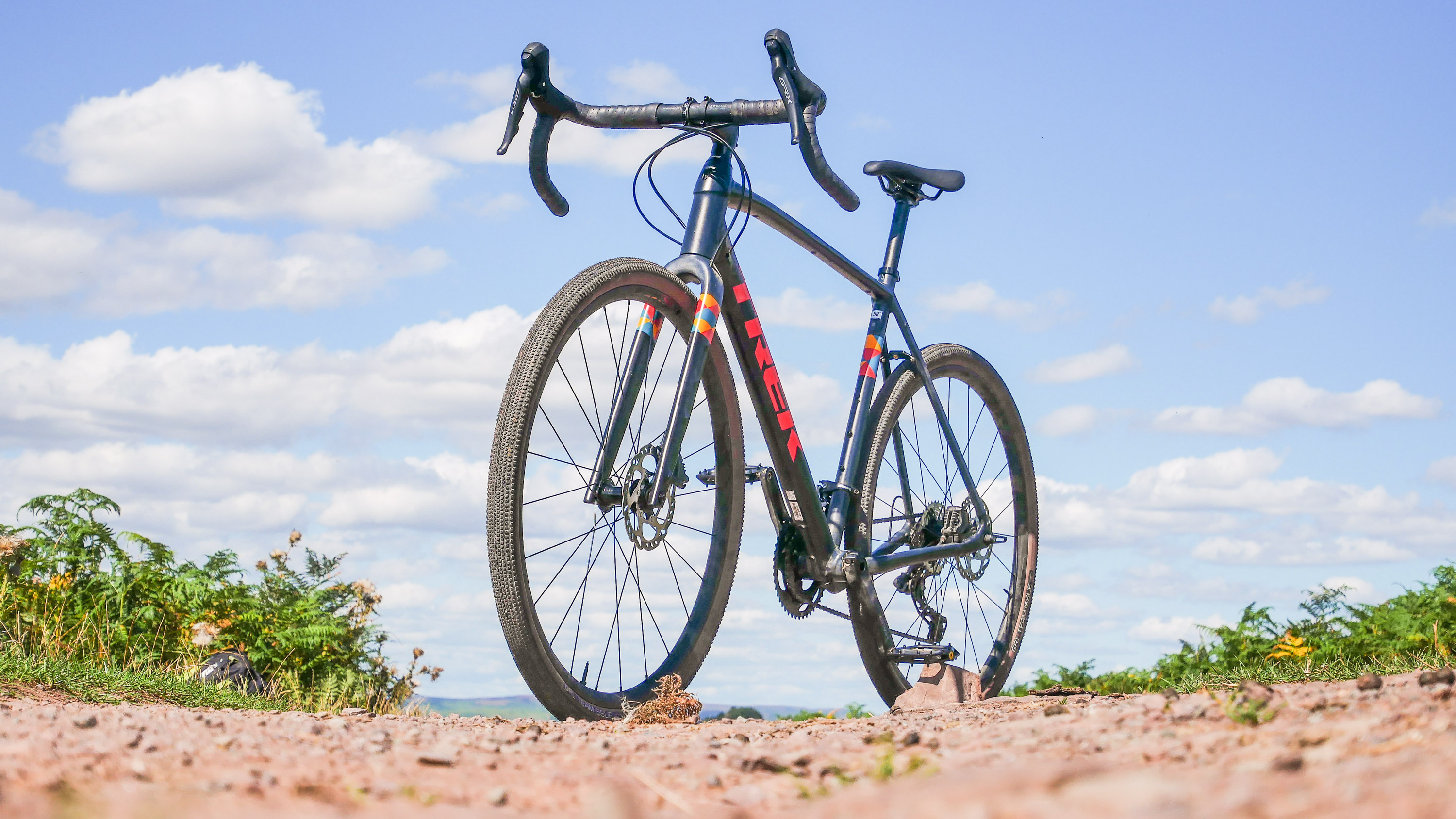
The head angle is the same as before at 72.3 degrees, presumably to keep the steering decently snappy, as is the bottom bracket drop at 7.4cm.
This might be the 'poor man's' model with its humble alloy frame, but that doesn't mean it's unsophisticated. The various touring-friendly mounts are complimented by internally-routed cables that help a lot when strapping on frame bags or cages, as well as keeping them generally out of harm's way. I did find several of the bungs protecting the mounting/cable holes disappeared overboard on rough trails though, so if you want to keep filth out of your threads/frame you might want to stock up – or wind in some actual bolts where you can.
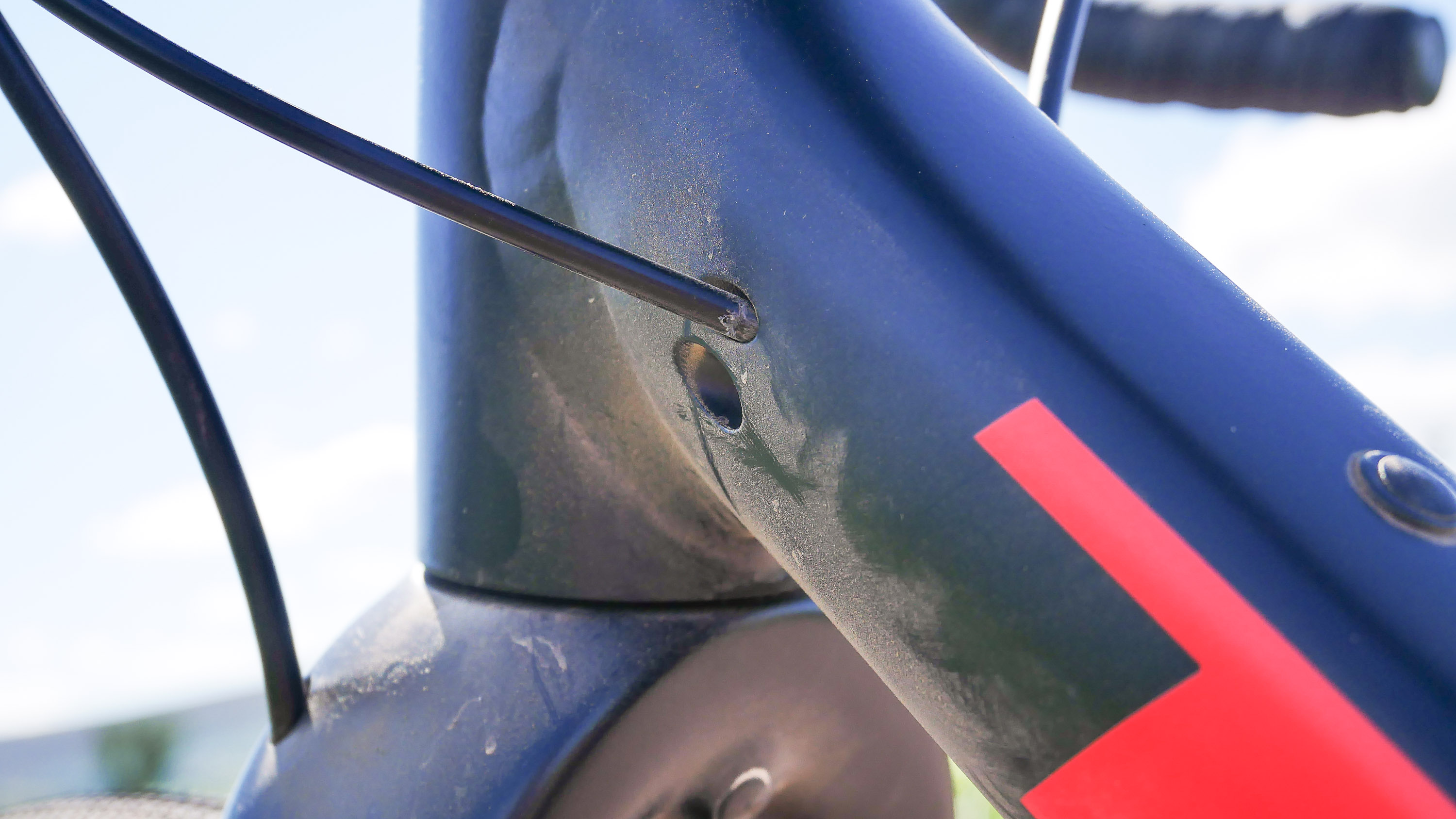
Components and build
Trek has spent the budget wisely here, speccing the excellent Shimano GRX shifters, levers and hydraulic brakes. The flat-fronted levers are particularly good for grip when it's rough, the shifts are always positive and the two-piston calipers are powerful and easy to modulate on the 160mm discs. Basically, the whole stop and go thing is covered perfectly.
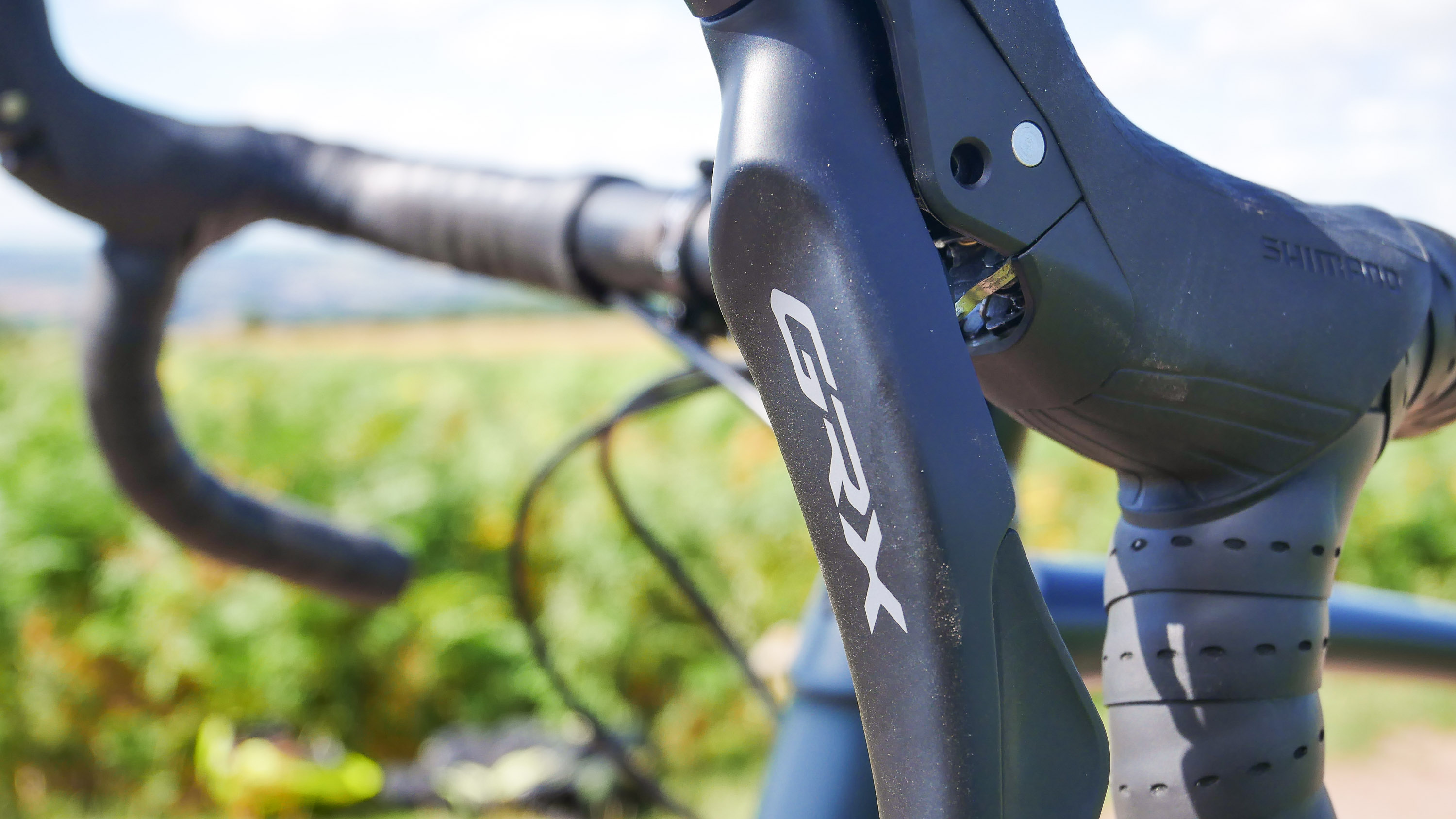
Well, almost perfectly. The 2x11 drivetrain gives a very useable spread of ratios, but for the most serious off-road climbing it's a little high. At the top end it's good for 35mph before you spin out, which is great for the road and fireroad descents, but leaves the lowest gear (30/34t) slightly high for the steepest, techiest climbs. That's especially true if the bike's loaded up.
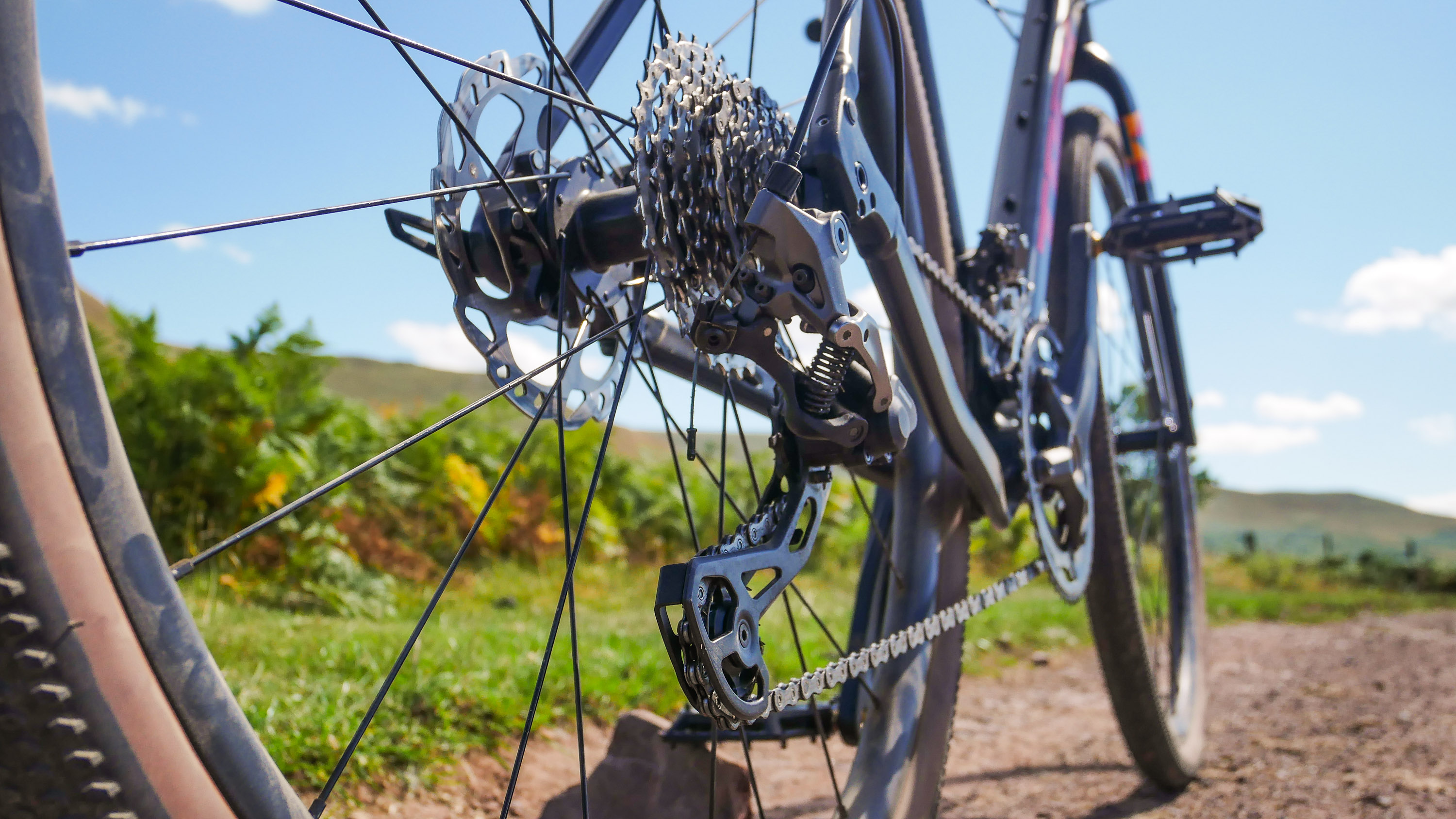
That's the lowest combination of ratios that will fit, though, so your options there are either to keep the bike as light as possible, fit a 1x crank and lose a fair bit of top speed, or get stronger...
The finishing kit is all in-house Bontrager stuff, and while it's all perfectly good they're pretty easy targets for weight loss upgrades. The Bontrager Elite Gravel bar is 44cm wide on this frame size with a good flare to the drops for extra leverage, and the comfy GRX hoods tilt inwards just enough to encourage a slightly elbows-out stance that's good for control.
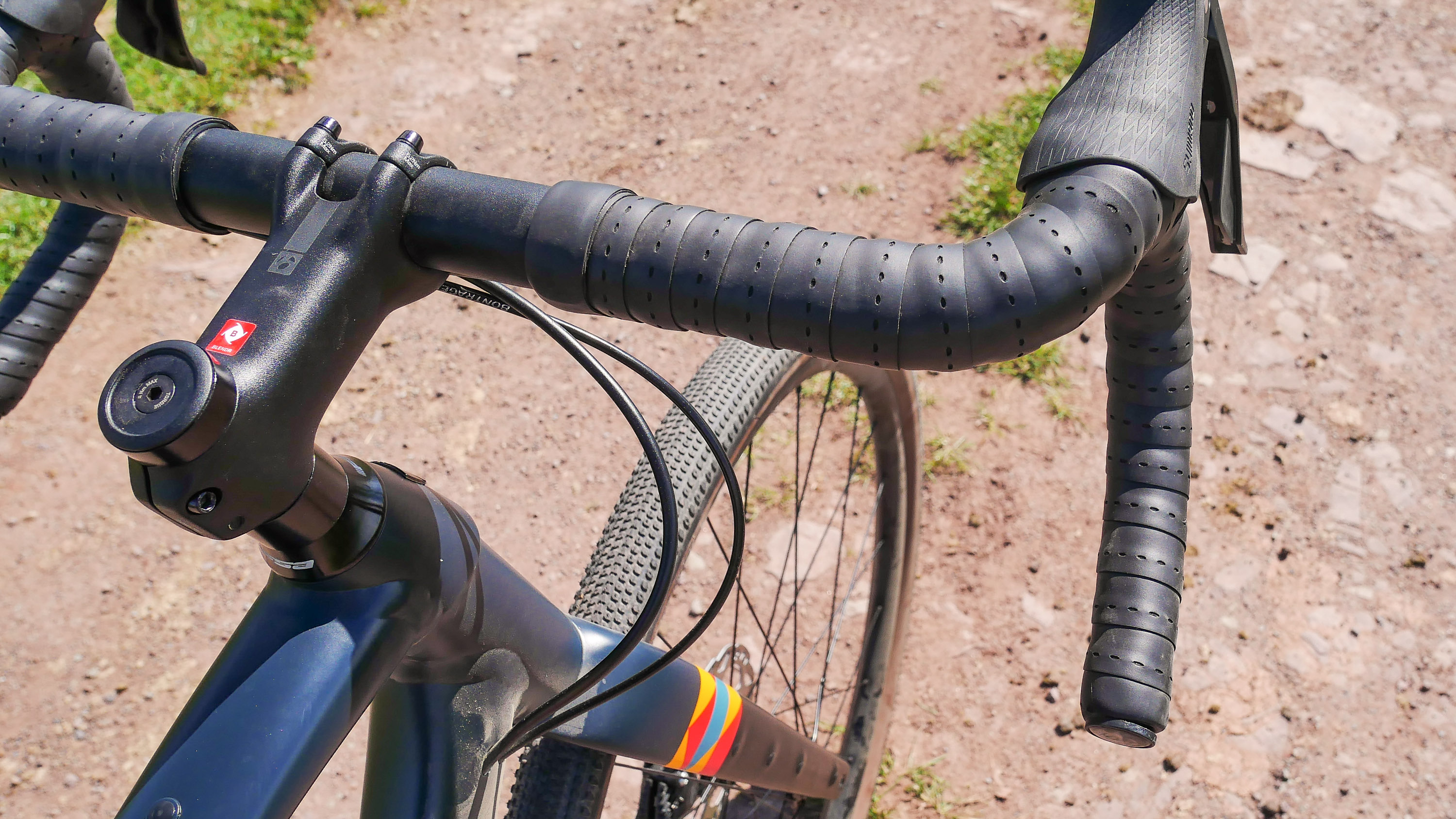
The wheels – Switch hubs, 21mm wide Paradigm rims (the SL version on one end, presumably the front) and 24 spokes on each – are similarly utilitarian, being strong, middling for weight and entirely decent for the job. Wearing Aeolus XXX rim strips they're tubeless ready, and so are the Bontrager GR1 Team Issue tires, which is nice – in fact, Trek lists 6oz of its TLR sealant as a 'tire part,' so presumably consumer bikes are supplied already set, just as our test bike was.
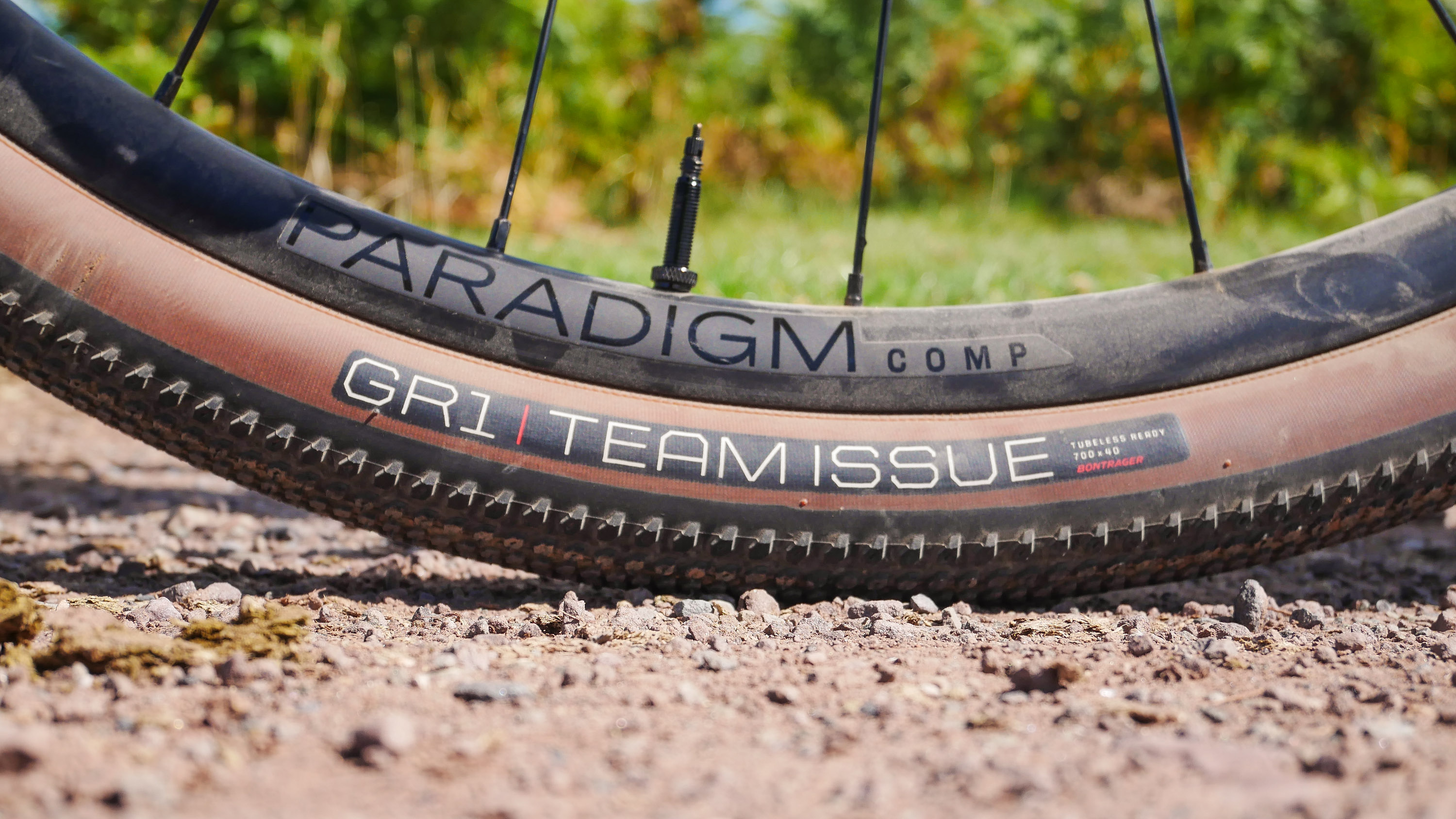
The tires are predictable and confidence inspiring on the unusually dry terrain of our test period, as well as on tarmac both damp or dry, but are clearly not designed for mud. There's room in the frame for up to 45mm rubber should you want to go wider.
Oh, and while the front axle looks like you'll need to carry a hex key to get it out, the lever on the rear thru-axle actually pulls out to fit in either one.
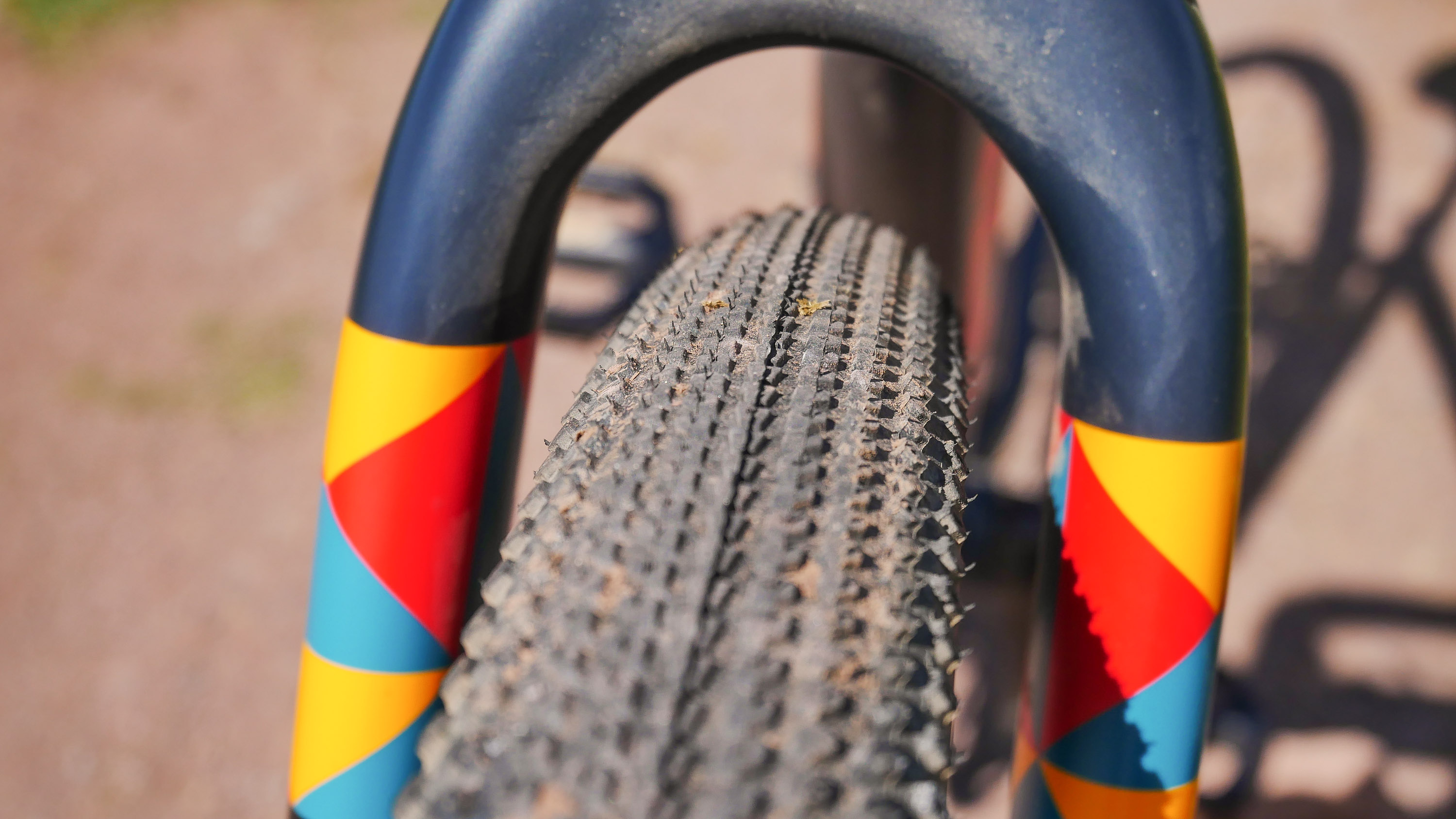
Performance
The Checkpoint has a confident feel – its length and reasonable heft keep it planted, while the steering is stable without being sluggish. It's the same whether you're on gravel or tarmac, and predictable in a friendly but not boring way. The chunky headtube and sizeable welded junctions do a great job of keeping it tracking where it's pointed in the rough.
Despite the chunky, almost box-section seatstays and generally rigid-feeling frame, it's comfortable for long rides, thanks to the high volume tyres, well-cushioned bar tape and a supportive, hammocky P3 Verse Comp saddle you really sit 'in'.
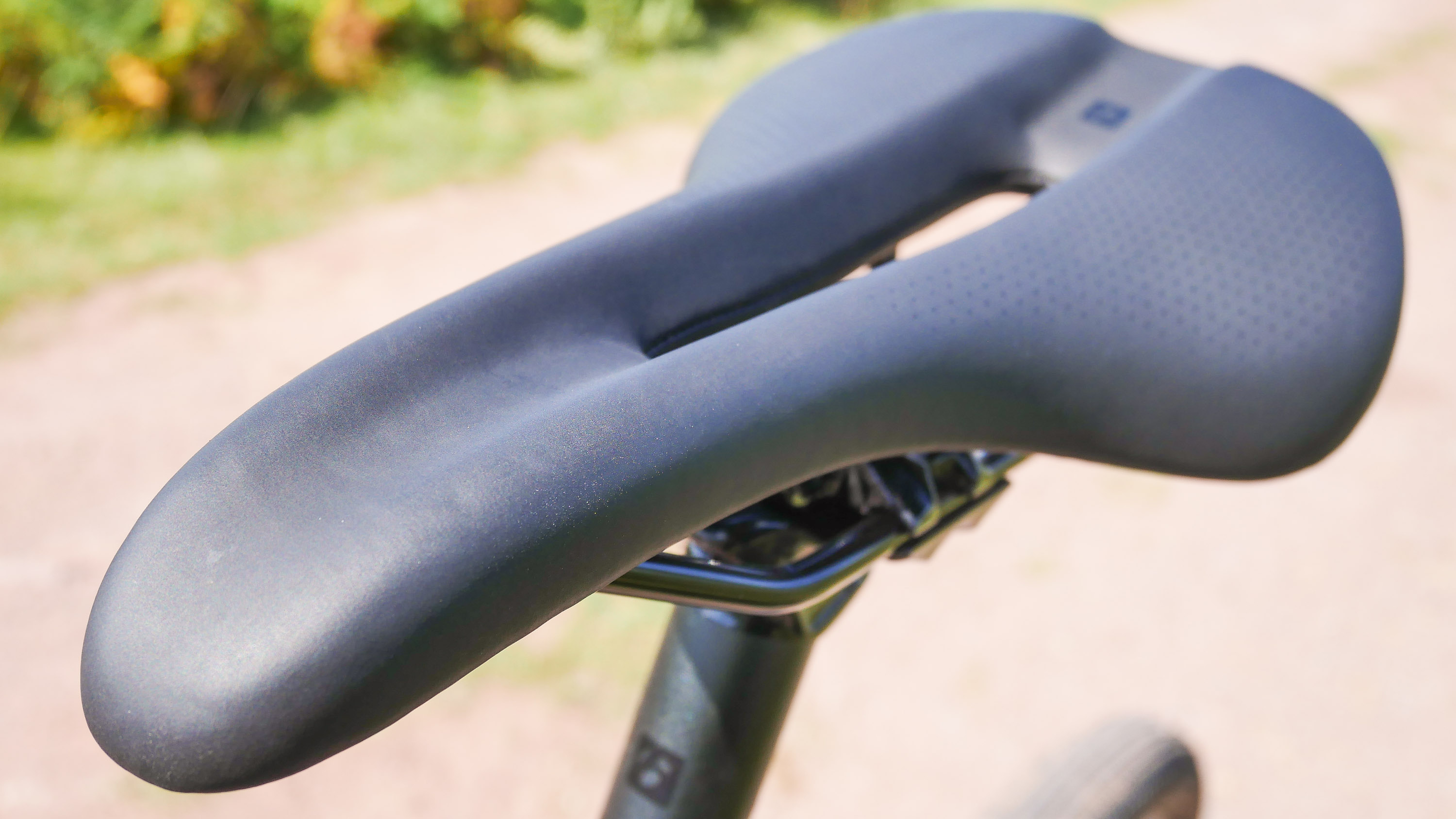
Get up some speed on gravel though and there's no disguising the aluminum build. By 30mph on a fireroad, your hands and feet are taking some serious vibes, and the chatter from sustained speed does reduce comfort.
Switching to carbon at the bar (and at the Bontrager seatpost) would both increase comfort and reduce weight, and though I found the saddle supportive and comfy both for long rides and hard pedaling efforts, it does have steel rails – it's another easy and relatively cheap target for weight loss and vibe reduction.
Alternatively, if you want more speed whatever the trails do, fit the best dropper post that will suit the 27.2mm seat tube and reap the rewards.
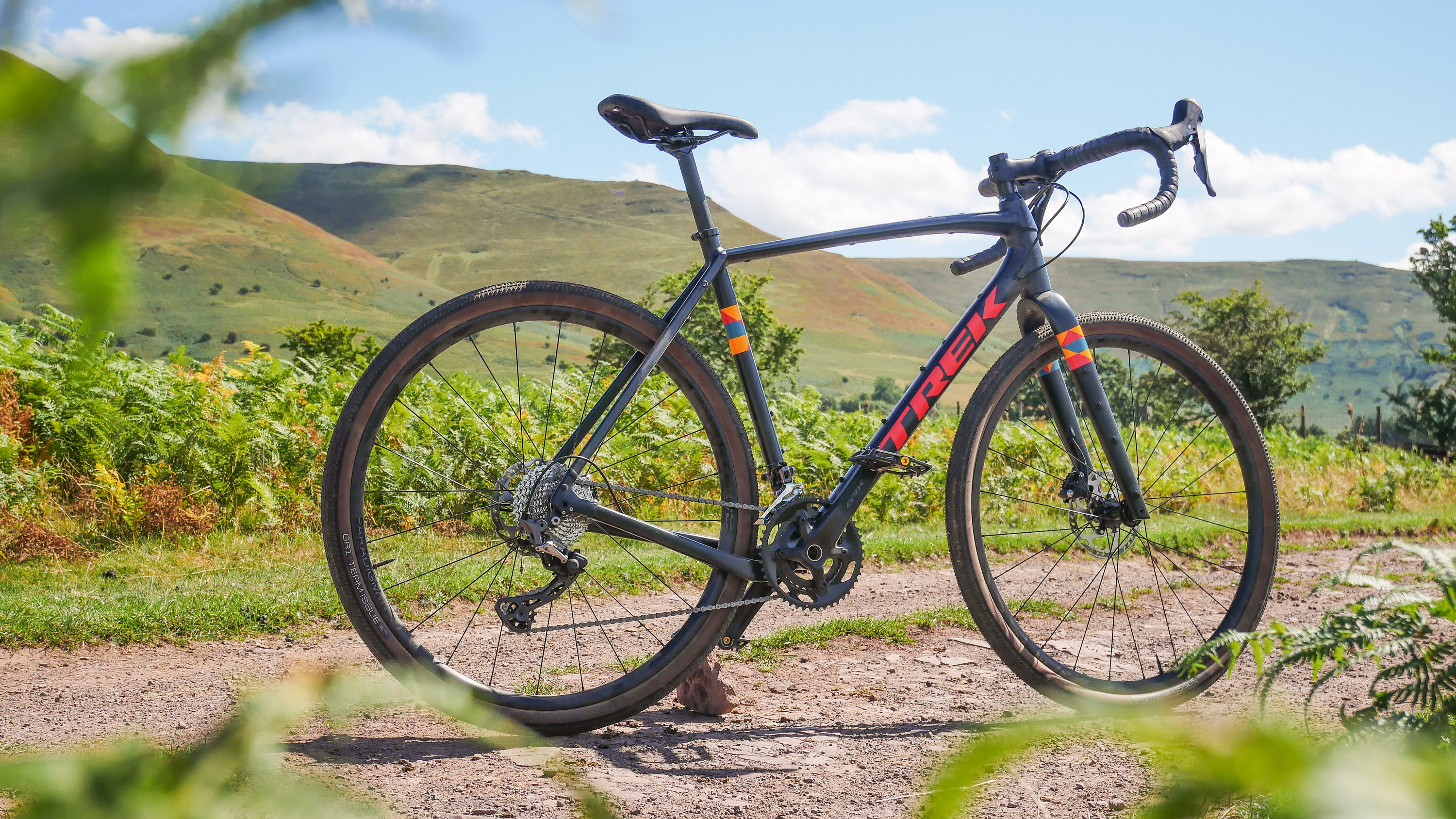
Personally, I would have quite liked the shorter cranks of the smaller sizes instead of the 175mm GRX RX600s fitted here, which would allow an even lower BB for descending confidence, but that's really just preference. The 7.4cm BB drop is pretty low in the scheme of things, cornering feel is predictable, and ground clearance is good.
Verdict
This is an extremely usable yet still very enjoyable bike. It nails that '2/3rds road bike, 1/3rd XC bike' feel that makes gravel bikes so good for so many things – commuting while avoiding the worst traffic, touring, exploring dilapidated rural lanes, getting in hard climbing efforts away from ANY traffic, or just generally getting out there and enjoying the view.
It's comfortable and reassuring from the off whatever the surface, and the money's been spent in the right places – this is a really solid base for years of riding fun.
Test conditions
- Temperature: Rarely less than 20 degrees C and up to 35
- Conditions: Dry, hard and dusty with almost zero rain
- Trails: Mountain singletrack, bridleways, forest gravel and crumbling rural lanes
Tech specs: Trek Checkpoint ALR 5
- Price: $2,500 / £2,400
- Discipline: Gravel
- Frame size tested: 58cm
- Seat tube angle: 72.5°
- Head angle: 72.3°
- Effective top tube: 59.7cm
- Bottom bracket drop: 7.4cm
- Wheelbase: 105.8cm
- Reach: 41.1cm
- Frame: 300 Series Alpha Aluminium
- Tires: Bontrager GR1 Team Issue 40mm, Tubeless Ready
- Drivetrain: Shimano GRX
- Sizes: 49, 52, 54, 56, 58 (tested), 61cm
- Claimed weight: 9.75 kg / 21.5 lb (56cm)
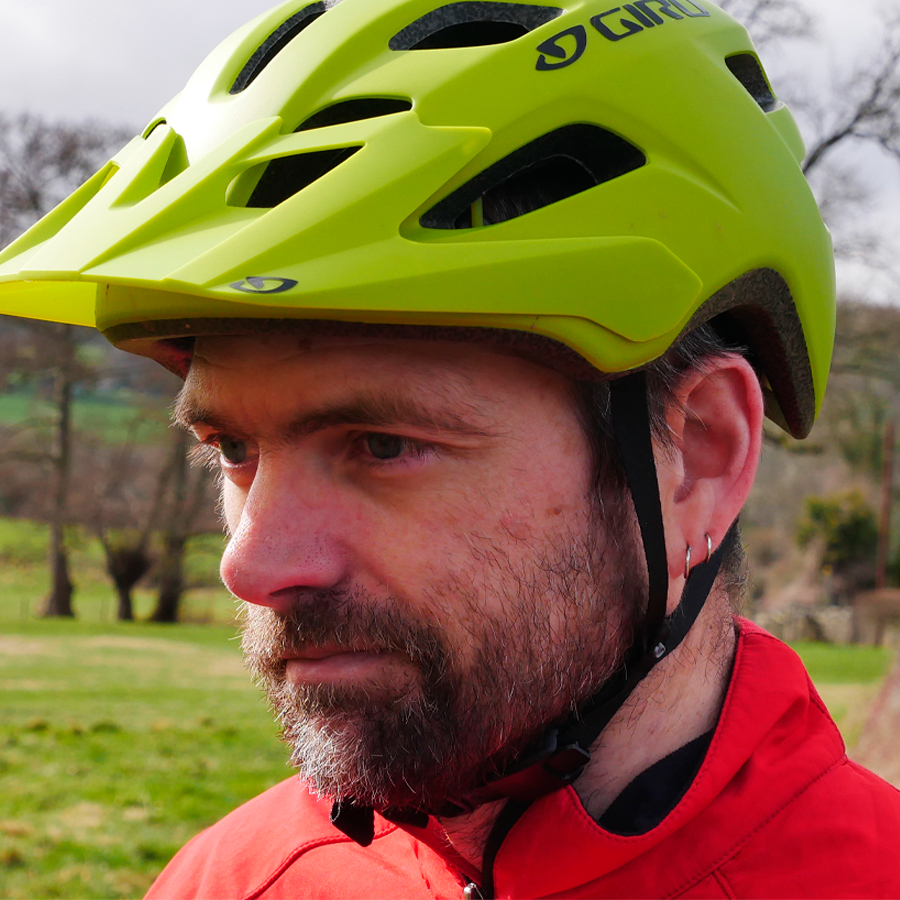
Steve is a highly experienced journalist and rider who's been involved with bikes of all kinds for more years than he would care to remember. Based in South Wales, he has mile upon mile of swooping singletrack, an array of plummet and winch descents and everything in between right on his doorstep.
